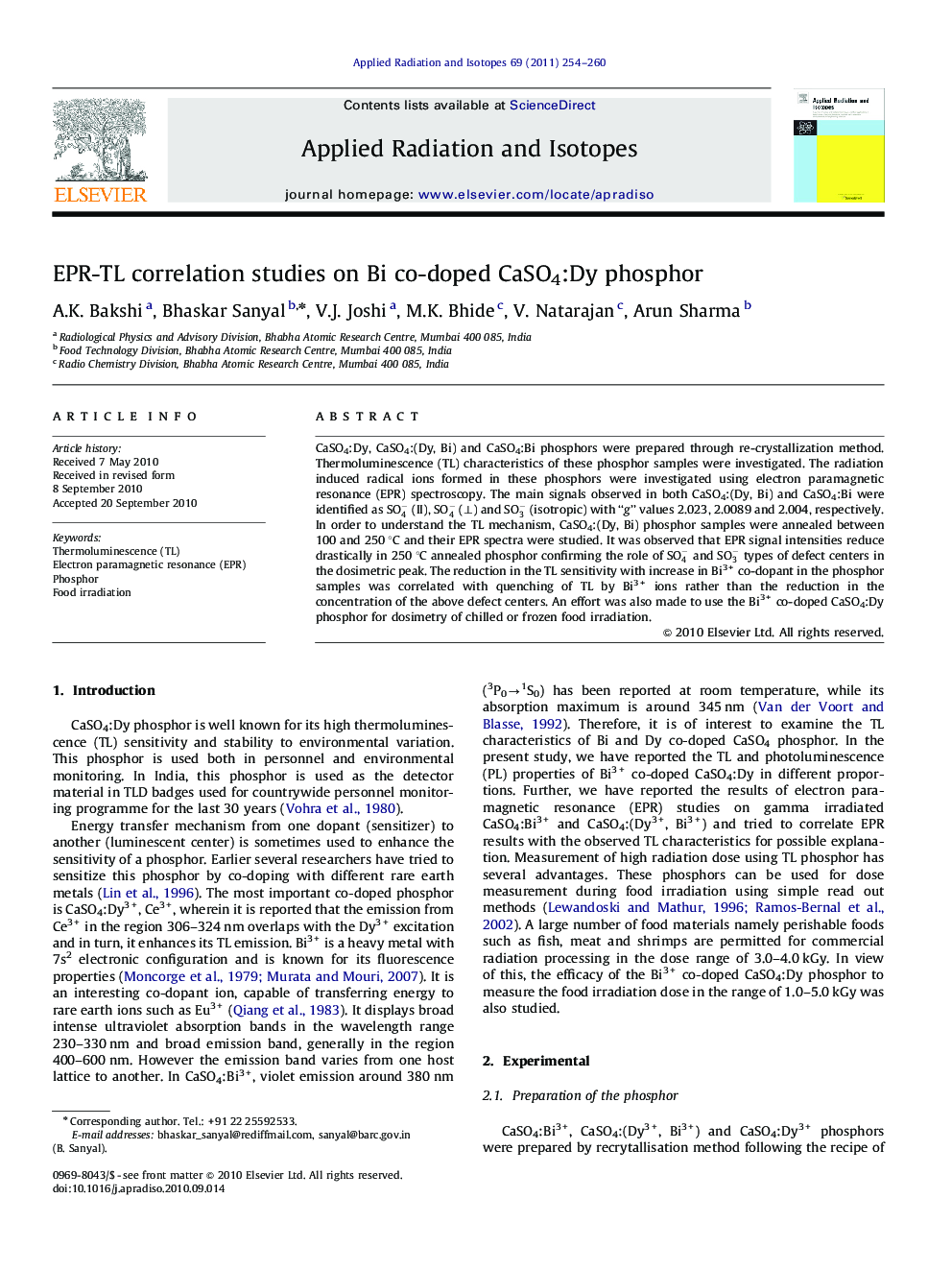| Article ID | Journal | Published Year | Pages | File Type |
|---|---|---|---|---|
| 1876416 | Applied Radiation and Isotopes | 2011 | 7 Pages |
CaSO4:Dy, CaSO4:(Dy, Bi) and CaSO4:Bi phosphors were prepared through re-crystallization method. Thermoluminescence (TL) characteristics of these phosphor samples were investigated. The radiation induced radical ions formed in these phosphors were investigated using electron paramagnetic resonance (EPR) spectroscopy. The main signals observed in both CaSO4:(Dy, Bi) and CaSO4:Bi were identified as SO4− (II), SO4− (⊥) and SO3− (isotropic) with “g” values 2.023, 2.0089 and 2.004, respectively. In order to understand the TL mechanism, CaSO4:(Dy, Bi) phosphor samples were annealed between 100 and 250 °C and their EPR spectra were studied. It was observed that EPR signal intensities reduce drastically in 250 °C annealed phosphor confirming the role of SO4− and SO3− types of defect centers in the dosimetric peak. The reduction in the TL sensitivity with increase in Bi3+ co-dopant in the phosphor samples was correlated with quenching of TL by Bi3+ ions rather than the reduction in the concentration of the above defect centers. An effort was also made to use the Bi3+ co-doped CaSO4:Dy phosphor for dosimetry of chilled or frozen food irradiation.
